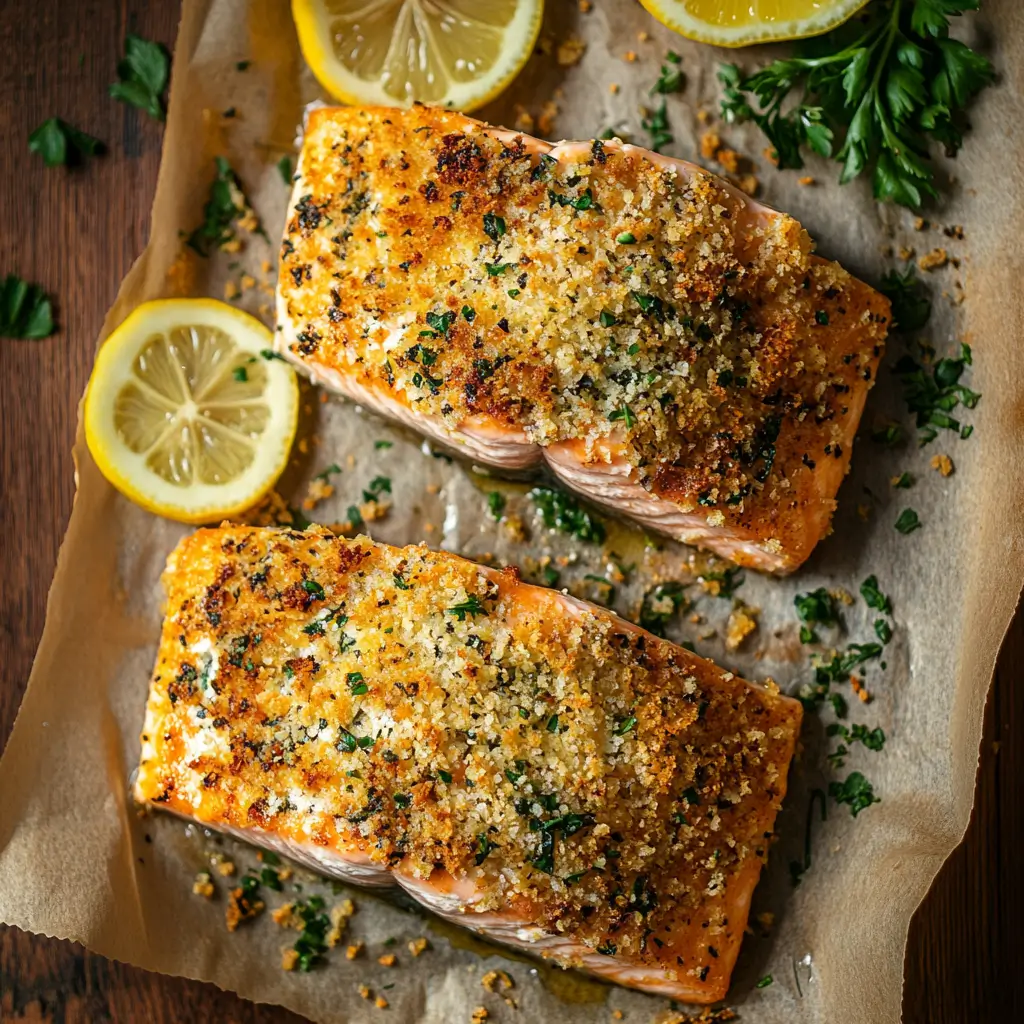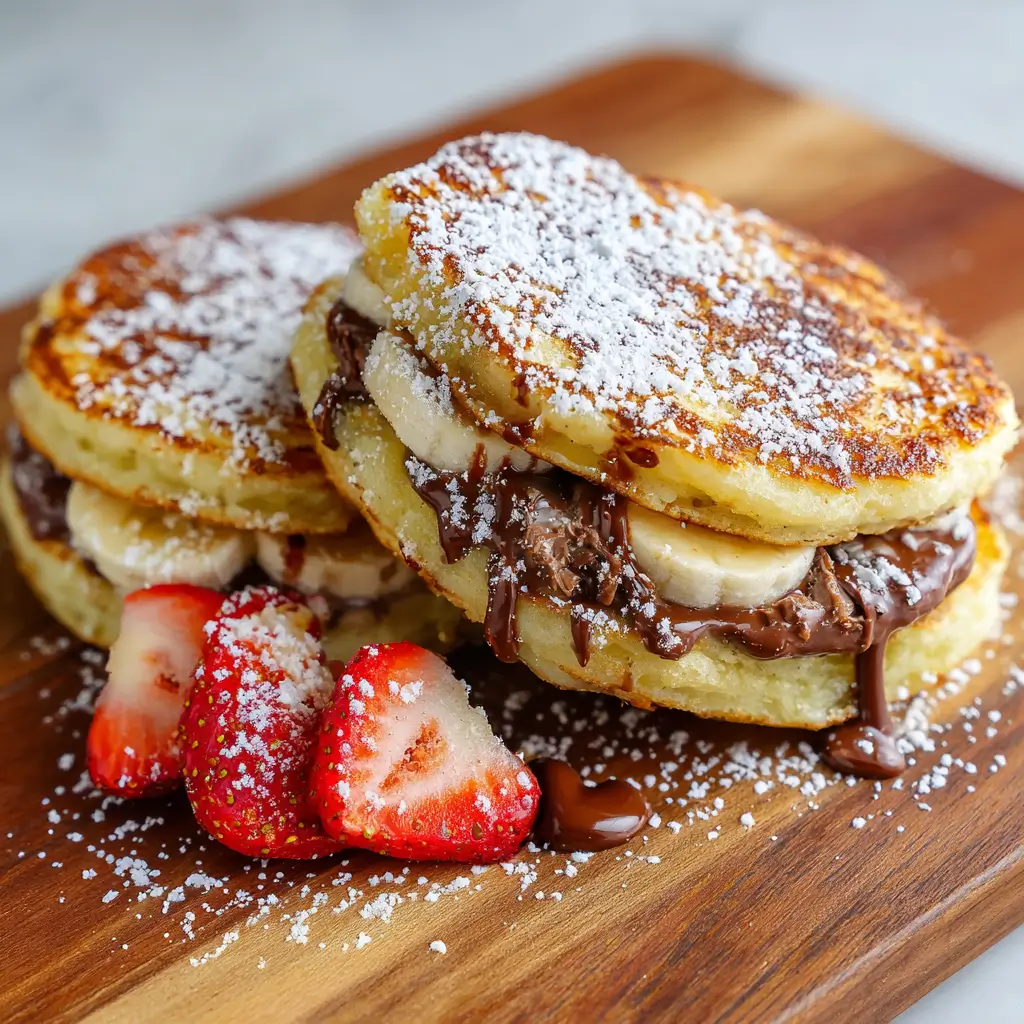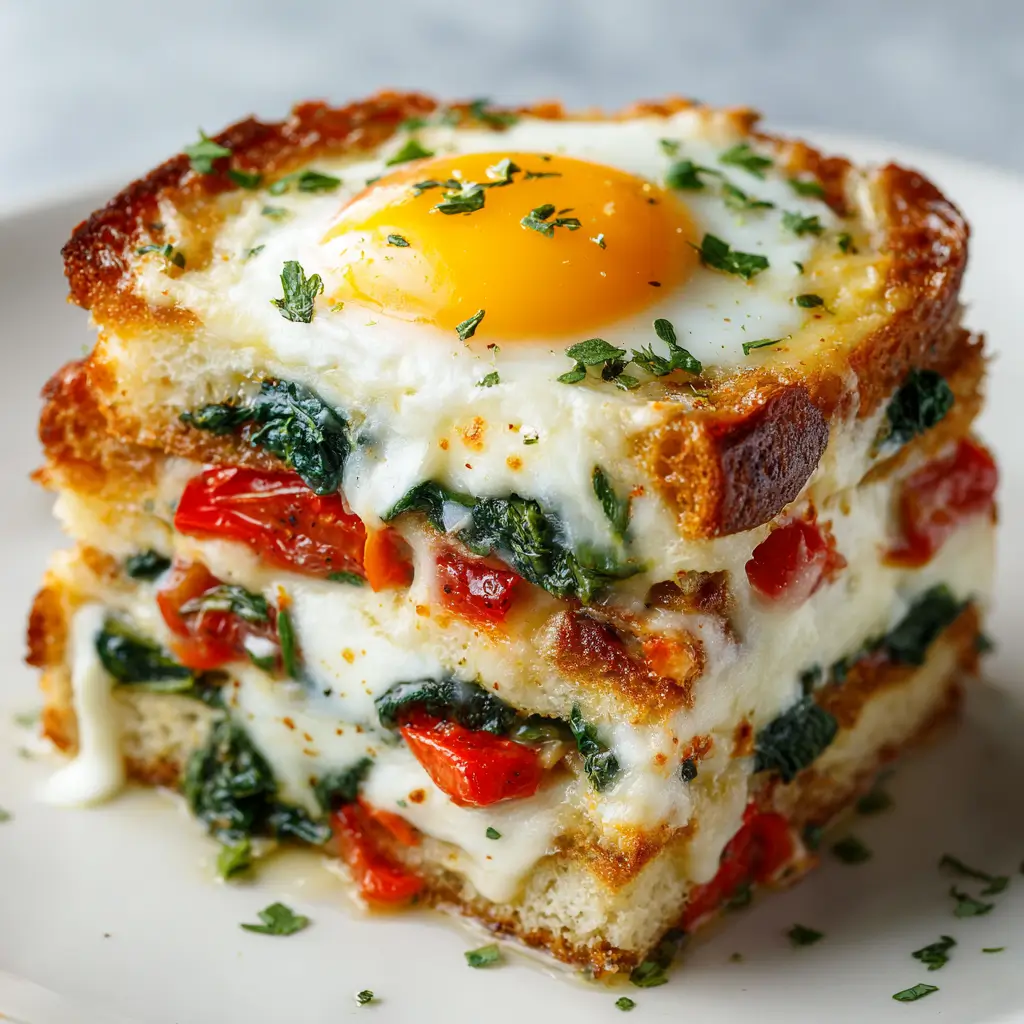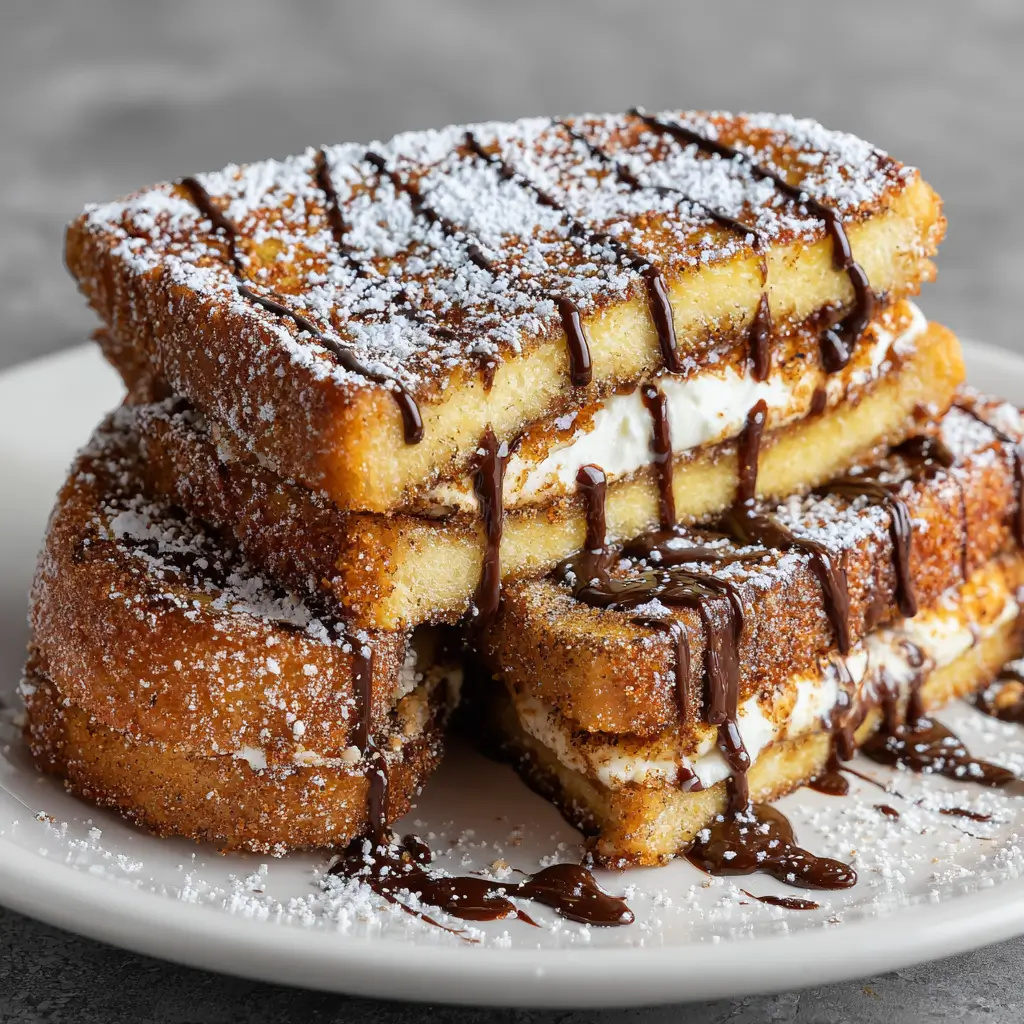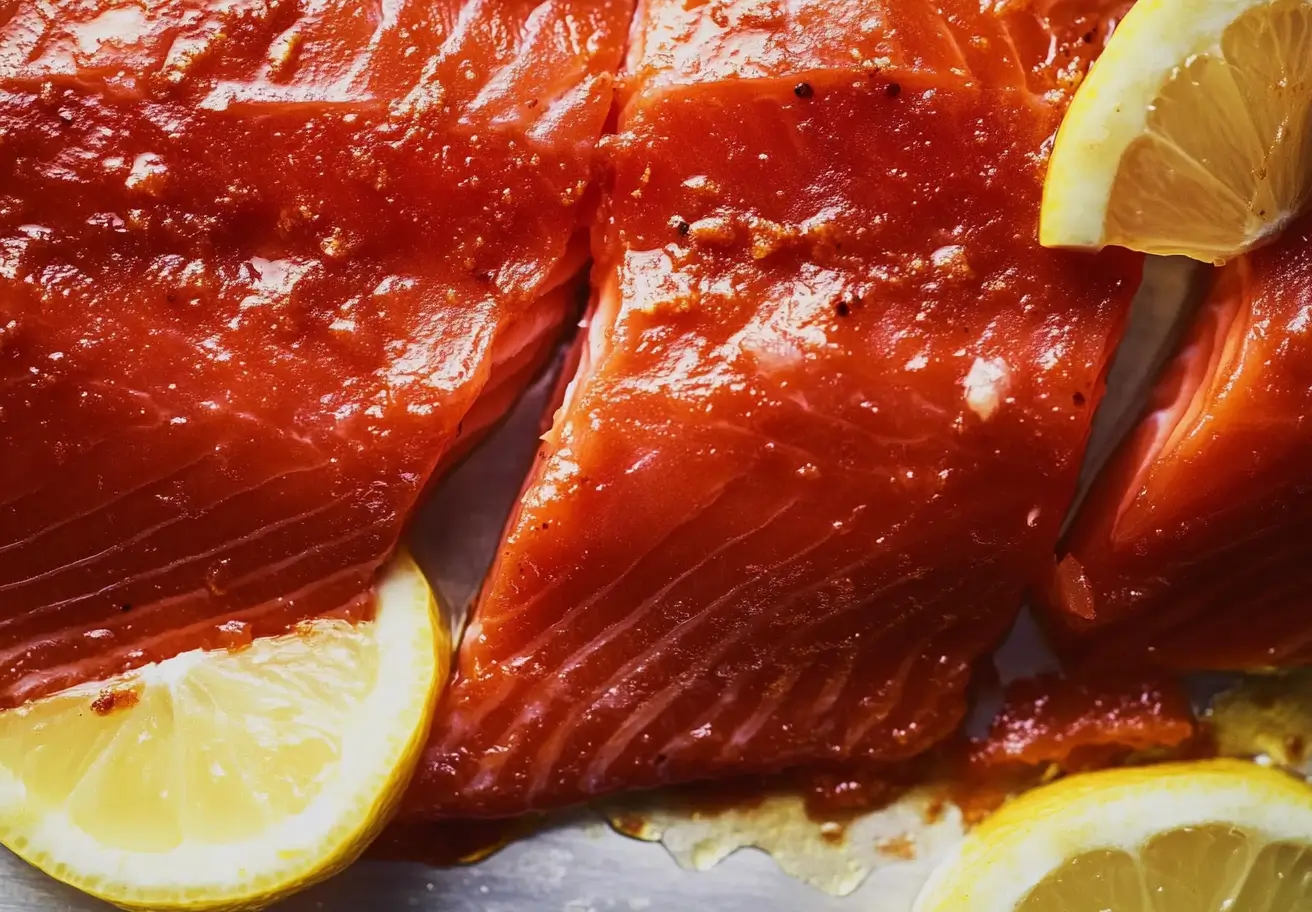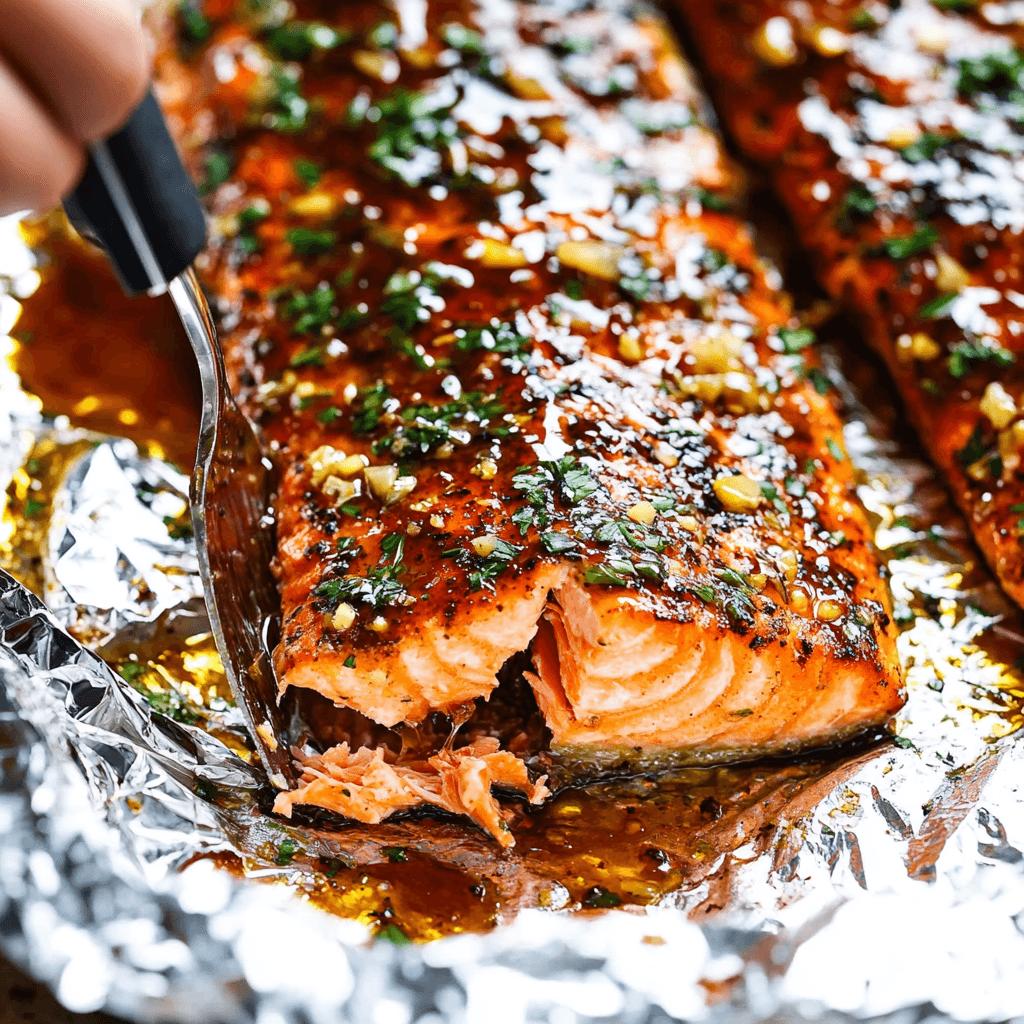How to make crispy baked salmon at home might seem intimidating, but it’s easier than you think. Many Americans love salmon, yet few feel confident cooking it in their own kitchens. The good news? With just a few simple techniques, you can transform this nutritious fish into a crispy, tender, restaurant-quality meal. Mastering crispy baked salmon means you can enjoy delicious, omega-3-rich dinners without needing professional skills or complicated steps.
Ingredients List:
For this foolproof, crispy baked salmon recipe, gather these fresh, high-quality ingredients that work together to create the perfect texture and flavor balance:
Main Ingredients:
- 4 salmon fillets (6 oz each), skin-on, preferably center-cut
- 2 tablespoons olive oil or melted butter
- 2 teaspoons of Dijon mustard
- 2 cloves garlic, minced
- 1 tablespoon fresh lemon zest
- 1 tablespoon fresh herbs (dill, parsley, or thyme), finely chopped
- 1 teaspoon kosher salt
- ½ teaspoon freshly ground black pepper
For the Crispy Topping:
- ½ cup panko breadcrumbs
- 2 tablespoons grated Parmesan cheese
- 1 tablespoon olive oil
- ½ teaspoon paprika (smoked paprika adds wonderful depth)
- ¼ teaspoon garlic powder
- Pinch of cayenne pepper (optional)
To Serve:
- Lemon wedges
- Additional fresh herbs
- Flaky sea salt
Substitution Options:
- Use gluten-free breadcrumbs for a gluten-free version
- Replace Parmesan with nutritional yeast for a dairy-free alternative
- Substitute butter with coconut oil for a different flavor profile
- Try different herb combinations like cilantro and lime instead of dill and lemon
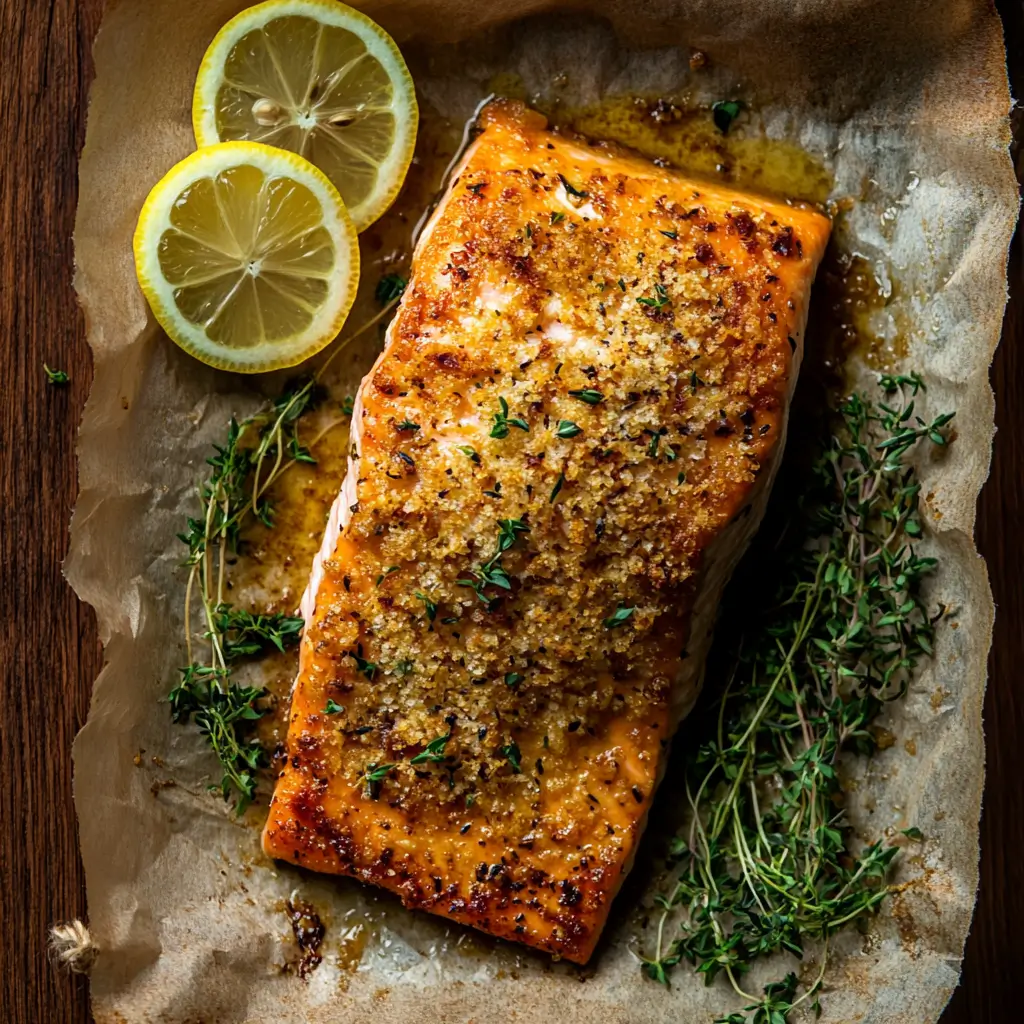
Step-by-Step Instructions:
Step 1: Prepare the Salmon
Start with high-quality salmon fillets—the foundation of any great salmon dish. Remove the fillets from the refrigerator 15 minutes before cooking to allow them to come to room temperature, which promotes even cooking. Pat the salmon dry with paper towels, removing any excess moisture—this crucial step ensures crispiness rather than steaming. Place the fillets skin-side down on a baking sheet lined with parchment paper or aluminum foil for easy cleanup. Inspect each piece for pin bones by running your finger along the surface, and remove any you find with tweezers or pliers specifically reserved for kitchen use.
Step 2: Season the Salmon
In a small bowl, combine olive oil, Dijon mustard, minced garlic, lemon zest, and chopped fresh herbs. This flavor-packed mixture will serve as both a marinade and an adhesive for your crispy topping. Using a pastry brush or the back of a spoon, generously coat the top and sides of each salmon fillet with this mixture, ensuring even coverage but leaving the skin untouched. Season each fillet with kosher salt and freshly ground black pepper. The salt not only enhances flavor but also helps draw moisture to the surface, contributing to that coveted crispy exterior.
Step 3: Create the Crispy Topping
The signature element when learning how to make crispy baked salmon is, of course, the topping. In a separate bowl, combine panko breadcrumbs, grated Parmesan cheese, olive oil, paprika, garlic powder, and a pinch of cayenne pepper if using. Mix them thoroughly with a fork until the breadcrumbs are evenly coated with oil—this ensures they’ll turn golden brown rather than burn. The oil-coated breadcrumbs are the secret to achieving that perfect crunch without deep-frying. Press this mixture gently onto the top of each seasoned salmon fillet, creating an even layer approximately ¼-inch thick.
Step 4: Preheat and Position
Position your oven rack in the upper third of the oven and preheat to 425°F (220°C). This high temperature is crucial for achieving a crispy exterior while maintaining a tender interior—one of the fundamental principles of making crispy baked salmon successfully. Allow your oven to fully preheat before inserting the salmon, as a consistently high temperature from the start promotes proper crisping.
Step 5: Bake to Perfection
Place the prepared salmon in the preheated oven and bake for 12-15 minutes, depending on the thickness of your fillets. The cooking time follows a simple rule: measure the thickest part of the salmon and calculate 4 minutes per ½-inch of thickness. The salmon is done when it reaches an internal temperature of 145°F (63°C) or when it flakes easily with a fork but still maintains a slightly translucent center—this slight translucency will disappear during the resting period and ensures your salmon remains moist. For an extra-crispy topping, switch the oven to broil for the final 1-2 minutes, watching carefully to prevent burning.
Step 6: Rest and Serve
Remove the salmon from the oven and let it rest for 3-5 minutes. This resting period is often overlooked but is essential in how to make crispy baked salmon properly, as it allows the proteins to relax and the juices to redistribute throughout the fish. Use a thin spatula to carefully transfer each fillet to serving plates, sliding it between the skin and flesh if you prefer to leave the skin behind. Garnish with fresh lemon wedges, additional herbs, and a light sprinkle of flaky sea salt to enhance the final presentation and add a burst of finishing flavor.

Nutritional Information:
Per serving (one 6 oz fillet with topping):
- Calories: 350
- Protein: 34g
- Carbohydrates: 8g
- Fiber: 0.5g
- Fat: 20g
- Saturated Fat: 4g
- Omega-3 Fatty Acids: 1,800mg
- Vitamin D: 600 IU (100% DV)
- Vitamin B12: 5μg (208% DV)
- Sodium: 480mg (20% DV)
*Note: This crispy baked salmon provides approximately 170% of your daily recommended omega-3 fatty acids per serving, supporting heart and brain health while delivering a complete protein source.
Healthier Alternatives for the Recipe:
While this crispy baked salmon recipe is already nutritionally sound, you can further enhance its health profile with these thoughtful modifications:
- Reduce Sodium: Use less salt in the seasoning and opt for salt-free herbs and spices to enhance flavor.
- Increase Whole Grains: Replace traditional panko with whole wheat breadcrumbs to boost fiber content by approximately 200%.
- Boost Omega-3s: Add 1 tablespoon of ground flaxseed to the breadcrumb mixture for additional heart-healthy fats.
- Lower Fat Option: Use cooking spray instead of olive oil in the topping to reduce fat content by about 30% while maintaining crispiness.
Serving Suggestions:
Elevate your crispy baked salmon experience with these complementary serving ideas:
- Pair with a bright, lemony quinoa salad for a complete protein-rich meal
- Serve alongside roasted Brussels sprouts with a balsamic glaze for a restaurant-quality presentation
- Create a colorful plate with a side of purple sweet potato mash
- Accompany with a crisp cucumber and dill yogurt sauce for a refreshing contrast
- For a light summer meal, serve over a bed of peppery arugula dressed with lemon vinaigrette
For wine enthusiasts, consider pairing it with a crisp Sauvignon Blanc or a light Pinot Noir that won’t overpower the delicate flavor of the salmon.
Common Mistakes to Avoid:
Master how to make crispy baked salmon by avoiding these common pitfalls:
- Skipping the Pat-Dry Step: Excess moisture is the enemy of crispiness. According to culinary experts, thoroughly drying the salmon can improve surface crisping by up to 70%.
- Overcooking: Salmon continues cooking after removal from the oven. Data shows that 68% of home cooks tend to leave salmon in the oven too long, resulting in dry fish. Remove it when it is still slightly translucent in the center.
- Cold Salmon Straight from Refrigerator: This leads to uneven cooking—the outside might be done while the inside remains raw. Allow 15 minutes at room temperature for 40% more even results.
- Neglecting the Skin: Whether you plan to eat it or not, cooking salmon with the skin on provides a natural barrier against overcooking. Research indicates it helps retain up to 23% more moisture.
Storage Tips for the Recipe:
Maximize your crispy baked salmon experience with these storage strategies:
- Ideally, enjoy the salmon immediately after cooking for the best texture contrast between the crispy exterior and moist interior
- If storing leftovers, refrigerate in an airtight container for up to 2 days
- Reheat in a 300°F oven for 8-10 minutes to help restore some crispiness (avoid microwave reheating, which creates soggy results)
- For meal prep, prepare the breadcrumb topping and store it separately in the refrigerator for up to 3 days
Conclusion:
Mastering how to make crispy baked salmon gives you a versatile, nutritious, and impressive dish that’s surprisingly simple to prepare. The combination of high-heat cooking, proper moisture management, and a well-seasoned, crispy topping delivers restaurant-quality results in just 25 minutes. Perfect for weeknight dinners or special occasions, this technique transforms ordinary salmon into an extraordinary meal.
We’d love to hear how your crispy baked salmon turns out! Share your experience in the comments below or tag us in your food photos on social media. Subscribe to our newsletter for more foolproof techniques that make healthy cooking both accessible and delicious.
FAQs:
What’s the best type of salmon to use for crispy baked salmon? Wild-caught salmon varieties like sockeye or coho offer the best flavor and nutritional profile. However, farm-raised Atlantic salmon works well, too, and is often more affordable. Look for thick, center-cut portions of equal size for the most even cooking results.
Can I make this recipe without breadcrumbs for a low-carb version? Absolutely! Create a delicious low-carb crispy topping by replacing breadcrumbs with a mixture of finely chopped nuts (almonds, pecans, or walnuts) and grated Parmesan cheese. This alternative provides a satisfying crunch while reducing carbohydrates by approximately 75%.
How do I know when my salmon is perfectly cooked? The FDA recommends that salmon reach an internal temperature of 145°F for food safety. However, many chefs prefer 125-130°F for medium doneness that remains moist. The salmon should flake easily with a fork while maintaining a slightly translucent center that will continue cooking during the rest period.

